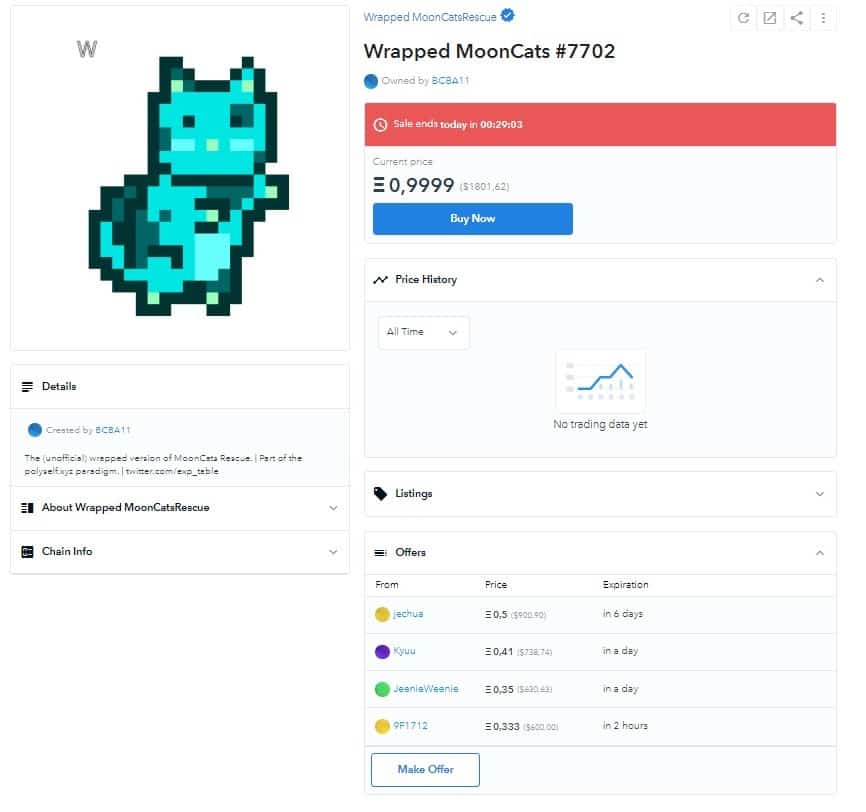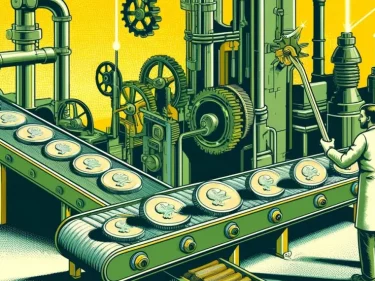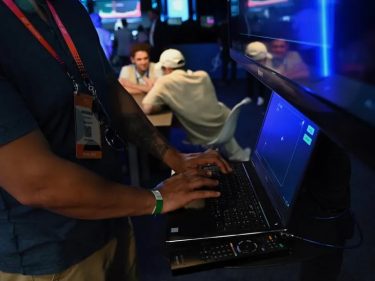What Is NFT? Non-Fungible Tokens Complete Guide For Beginners
-
by Lydia Ludmila
- March 23, 2021
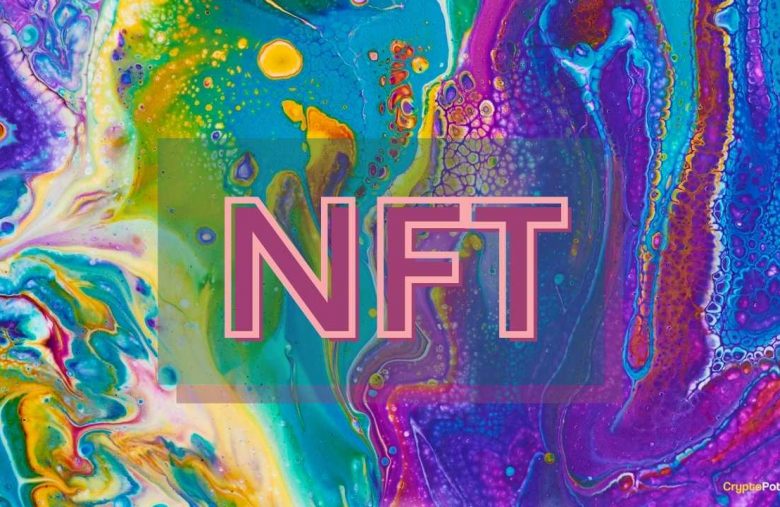
With the creation of Bitcoin back in 2009, Satoshi Nakamoto would have probably never guessed that the world would buy digital, collectible CryptoKitties, Punks, Hashmasks, arts, celebrity music, and so forth.
Non-fungible tokens (NFTs) are changing the way we own things digitally.
An NFT, or non-fungible token, is a type of cryptocurrency that represents a unique digital asset, like a piece of art or digital item. The easiest explanation of an NFT is just to think of it as a digital file. Just in the way that if you were to send me an image or any type of file over email, it would be a JPEG or it could be a GIF, or any other file format. An NFT is just a file format for transferring data and information on a blockchain network.
You may have heard about NFTs after the crazy sale by digital artist Beeple at Christie’s auction house for $69 million.
Let’s explore together what NFTs are and why they matter. I’ll be covering the following:
- What is a non-fungible token?
- What are the characteristics of NFTs?
- What kind of NFTs Exist?
- How do NFTs work?
- Why do we need non-fungible tokens?
- Which projects are actively using NFTs?
- How to Buy and Transfer NFTs?
Yes, make some tea and relax. This is going to be a long article 🙂
What is a non-fungible token (NFT)?
An NFT is a digital asset that exists on a blockchain. The blockchain serves as a public ledger, allowing anyone to verify the asset’s authenticity and ownership.
So unlike most digital items which can be endlessly reproduced, each NFT has a unique digital signature, meaning it is one of a kind.
NFTs are usually bought with the cryptocurrency Ether (ETH) and the blockchain keeps a record of transactions. While anyone can view the NFTs, the buyer has the status of being the official owner – a kind of digital bragging rights.
We can describe an NFT as a cryptographic token that defines an asset uniquely. It can represent both a digital asset such as an image, but it can also track real-world assets, such as a house or car, or a song, for example.
Fungible vs Non Fungible token
Bitcoin is a fungible token. You can send someone one Bitcoin and they can send one back, and you still have one Bitcoin. (Of course, the value of Bitcoin might change during the time of exchange.) You can also send or receive smaller amounts of one Bitcoin, measured in satoshis (think of satoshis as cents of a Bitcoin), since fungible tokens are divisible.
The fungibility property matters most for digital currencies such as Bitcoin. This allows people to freely trade Bitcoins with each other as it doesn’t matter which Bitcoin you own. However, when we apply fungibility to digital assets, that would mean users can freely trade them, and we can’t prove ownership of the asset as you can interchange them with any other asset. That’s a problem if we want to uniquely identify assets. For that reason, non-fungible tokens have been created.
On the other hand, non-fungible tokens are not divisible, in the same way that you cannot send someone part of a concert ticket. Part of a concert ticket wouldn’t be worth anything on its own and would not be redeemable.
What are the Characteristics of Non-Fungible Tokens?
Let’s take a look at the following three properties that make NFTs so desired – uniqueness, rarity, and indivisibility.
Unique, verifiable identity
We’ve already discussed the importance of uniqueness. NFTs allow you to uniquely define an asset by providing metadata that describes the asset and sets it apart from other assets.
For example, a project, such as Decentraland, sells virtual pieces of land. To uniquely define each piece of land, the metadata consists of virtual coordinates and the properties of the land, such as the percentage of land that’s covered by grass or what buildings it has.
Provable scarcity
Rarity, also referred to as scarcity, is an element that makes NFTs popular. With a traditional ERC20, token developers can freely define the limits for the token. Let’s say you want a supply of 1,000,000 tokens? Yes, that’s possible. Do you want more tokens? Just increase the total supply within your smart contract.
With NFTs, it’s not possible to infinitely create new assets. Rarity makes sure that you can only define each asset once on the blockchain, which makes NFTs so desired among collectors.
Someone else can’t register the same asset for a second time, which makes assets rare. In other words, rarity gives value to NFTs, as long as people want to spend money on them. To get back to the Decentraland example, you can truly own a piece of land in a game and trade it just like a real piece of land. How amazing is that 🙂
Indivisibility
Lastly, you can’t split NFTs. For example, you can own one full bitcoin. However, if you don’t have enough money to buy a full bitcoin, you can split a bitcoin into smaller denominations and buy 1/10 of a bitcoin. The denominated units of bitcoin are known as satoshis.
To expand on this example, you don’t want to allow users to buy 10% of a train ticket. In other words, if Bitcoin had non-fungible characteristics, you would only be able to buy a full bitcoin.
What kind of NFTs Exist?
All kinds of digital objects – images, videos, music, text and even tweets – can be turned into an NFT.
Digital art has seen some high-profile sales, while in sports, fans can collect and trade NFTs relating to a particular player or team.
For instance, on the National Basketball Association’s Top Shot platform, enthusiasts can buy collectible NFTs in the form of video highlights of moments from games.
Metallic Gold LE Challenge 20 expires Mon., Mar. 29 at 10am PDT
Collect all
required Moments & score this exclusive reward of Jamal Murray slicing the defense for a vicious hammer dunk
This Moment will never be released in packs
More info: https://t.co/sMaklmvUAw pic.twitter.com/KsSifWn4KE
— NBA Top Shot (@nbatopshot) March 23, 2021
While these highlights can be seen for free on other platforms such as YouTube, people are buying the status as the owner of a particular NFT, which is unique due to the digital signature.
NFTs can also be patches of land in virtual world environments, or exclusive use of a cryptocurrency wallet name.
Also an auction for the first ever tweet from Twitter boss Jack Dorsey – “just setting up my twttr” – has been sold for more than 2.9 million US dollars (£2.09 million). Jack Dorsey donated the money to a charity battling Covid-19 in Africa..
Recent High-Profile NFTs sales
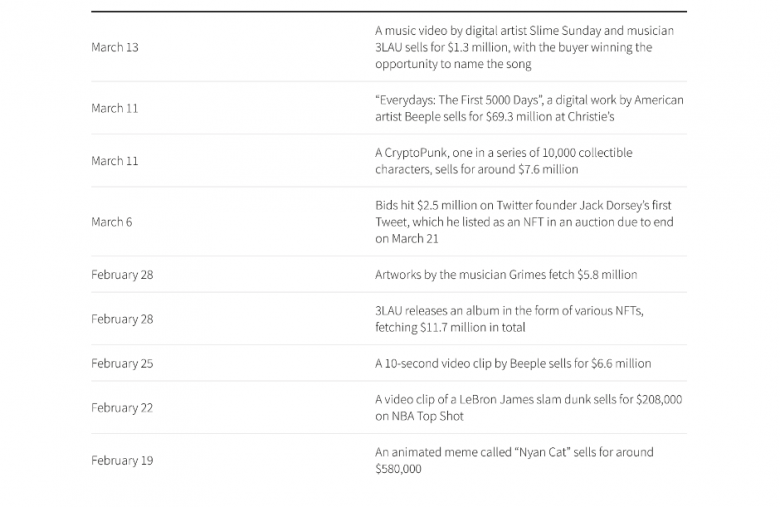
How do Non-Fungible Tokens work?
Tokens like Bitcoin and Ethereum-based ERC-20 tokens are fungible. Ethereum’s non-fungible token standard, as used by platforms such as CryptoKitties and Decentraland, is ERC-721. This ERC-721 standard was finalized on the 24th of January 2018 and defines the functions for Ethereum contracts to comply with it.
Non-fungible tokens can also be created on other smart-contract-enabled blockchains with non-fungible token tools and support. Though Ethereum was the first to be widely used, NEO, EOS and TRON blockchains now have NFT standards.
Non-fungible tokens and their smart contracts allow for detailed attributes to be added, like the identity of the owner, rich metadata, or secure file links. The potent of non-fungible tokens to immutably prove digital ownership is an important progression for an increasingly digital world. They could see blockchain’s promise of trustless security applied to the ownership or exchange of almost any asset.
As is the challenge of blockchain to date, non-fungible tokens, their protocols and smart contract technology is still being developed. Creating decentralized applications and platforms for the management and creation of non-fungible tokens is still relatively complicated. There is also the challenge of creating a standard. Blockchain development is fragmented, many developers are working on their own projects. To be successful there may need to be unified protocols and interoperability.
Why do we need non-fungible tokens?
NFTs are very convenient for digital economies. The gaming industry, for example, is home to many micro-economies. Just take a look at games such as CS:GO, League of Legends, or Fortnite: Battle Royale. Each of those games hosts an economy of in-game assets that can be traded among players. Players often receive in-game assets for winning a game, such as skins for their avatar or stickers for their weapon.
Here, gamers are willing to pay money for receiving a beautiful skin to enhance their gaming experience. However, gamers do not truly own those assets, and often, the game can still control the price for in-game assets or make modifications to a particular skin which can cause its price to drop sharply. This has happened in the past with CSGO skins.
To avoid this:
“NFTs are a great use case for gaming economies so that digital assets can’t be altered, the scarcity can be controlled, and gamers can trade these digital assets.”
This would even open up the possibility to create inter-game economies where a weapon or avatar skin can be used across different games.
Furthermore, the decentralized identity movement also benefits from NFTs as you can link physical properties such as your house or car to your decentralized identity, becoming a true proof of ownership where you can trustlessly transfer assets in a global market.
To summarize, here’s a shortlist of possible representations for NFTs:
- Collectibles
- Art: both physical as digital
- In-game items, such as skins or stickers
- Items in a virtual world, such as a piece of land
- Real-world assets, such as cars or houses
- Identity-related properties, such as certifications or medical history.
Which projects are actively using NFTs?
Many projects have introduced NFTs. Let’s take a look at some of the most prominent projects that make use of this technology.
CryptoKitties
It’s impossible not to talk about CryptoKitties as this was the first use case of NFTs to hit mainstream media. Its concept is closely linked to that of Pokemon Go. Instead of collecting Pokemons that each have unique characteristics, you can collect digital crypto cats that come with certain characteristics. Through breeding cats, you can create new cats and so discover new characteristics.
Decentraland
Next up, Decentraland is a virtual reality world in which you can own a piece of virtual land. The game allows you to further develop your piece of land or build things on top of it. All of these details are stored in the metadata of your NFT. Most importantly, the game allows you to trade virtual land with other gamers so you can create large virtual communities.
NFTs are increasingly making their presence felt in the gaming space, too. Decentraland is the world’s first fully decentralized game world, built on the ERC-20 token MANA. Users can spend MANA to buy goods, services and 10x10m plots of virtual land, underpinned by the non-fungible LAND token.
The game world itself is similar to Minecraft; simple blocky graphics and user-generated creations, which include everything from art galleries (where NFTs can be displayed) to simple games built within the game world.
Terra Virtua Ecosystem
A major emerging market for NFTs is the creation of digital collectibles—similar to physical trading cards, they derive value from their scarcity. Numerous brands have started licensing their content for use in digital collectibles; one of the companies at the forefront of the movement is Terra Virtua.
Terra Virtua bills itself as the “home of digital collectibles,” enabling fans to create a digital “Fancave” where they can display their NFT assets.
Gods Unchained
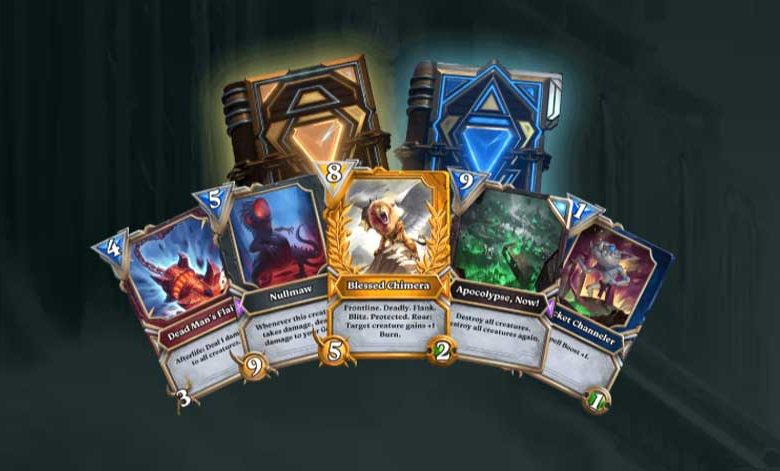
Remember playing card games and exchanging them with your friends, such as Yu-Gi-Oh? Some collectors went as far as listing cards on eBay or other online marketplaces to complete their collection. As you can see, it wasn’t easy back in the days to trade and collect cards. Card collectors had to deal with various uncertainties –
- What if I pay for a card and don’t receive it?
- What if the card I just bought online is counterfeit?
- How do I prove ownership of a card after buying it?
Gods Unchained has created a collectible card game where cards are issued as NFTs. Therefore, solving all of the above problems as the ownership of cards can be transferred digitally, and you can verify the authenticity of each card. Furthermore, you can quickly exchange ownership of cards via a simple Ethereum transaction.
NBA Top Shots
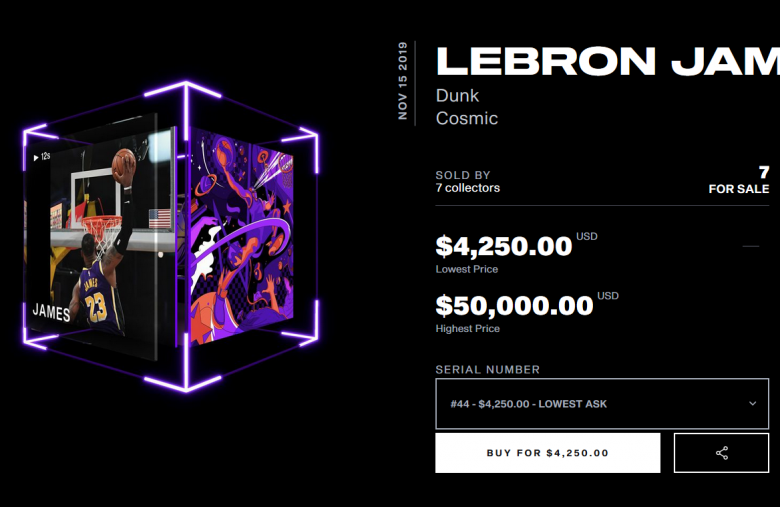
NBA Top Shots is undoubtedly one of the most popular platforms for NFTs, built on the FLOW blockchain.
It’s a novel concept where different moments from various NBA games are captured and then minted into NFTs. There are various tokens with a different rarity.
For instance, some moments are only minted into a few NFTs, while others – into thousands. This is why some are skyrocketing in value as investors flood the market to own them.
More interestingly, the platform has quickly risen to become one of the most hyped ones, and every pack drop receives thousands of people on the waiting list, eager to participate.
OpenSea Marketplace for NFTs
Lastly, it’s worth mentioning the OpenSea marketplace, which allows for any NFT to be auctioned on the platform. OpenSea acts as a decentralized marketplace where trading happens through a smart contract. It allows you to trade more than 200 types of NFTs, including CryptoKitties, SuperRare art, Gods Unchained cards, and even Ethereum domain names.
How to Buy NFTs?
Now that you’re aware of what NFTs are let’s see how you can buy them. First off, there are a few very popular marketplaces that are booming with volume on NFTs. One of them is OpenSea, and the other one is Rarible.
Let’s have a look at how to buy an NFT on OpenSea. To use both of them, you need to connect an ERC-721 compatible wallet such as MetaMask. If you don’t know how to install and set Metamask, I wrote a step by step tutorial here.
This is how the browsing section of the platform looks like. As you can see, on the left side, you can find various collections that are usually the ones trending the most.
Below each NFT, you can see how much time there is until the auction is completed. For this example, we’re clicking on the first available NFT – the one of the Wrapped MoonCat.
This is how the specific NFT buying page looks like. You have all the information needed in front of you. This includes the price history (if there’s any trading data), the creator, a description of the NFT, as well as the current offers down below. From here, there are two options.
First, you can buy the NFT directly for its listing price. In this case, it’s 0,9999 ETH. If you want to participate in the auction, however, you need to “make an offer” using the button down below. If your offer is accepted, your account will be debited, and you will receive the NFT in return for the ETH.
NFTs and Beyond
So, how did NFTs manage to receive value? It’s the same as asking why a particular painting is valued at 1,000 euros. Why would you pay 1,000€ for a physical painting that may as well be counterfeit as you can own a digital painting of which you know you are the sole owner, and you can prove its authenticity.
In the end, the value of an NFT depends on how much money one is willing to pay for it, just as with any collectible item. The value isn’t inherent to the object itself but is rather assigned by people who deem it valuable. In essence, value is a shared belief.
It’s also interesting to note that some particular NFTs have absolutely exploded in value. For instance, Beeple’s “The First 5,000 Days” NFT sold for $69 million.
In conclusion, NFTs have gained a lot of popularity and exposure over recent years as they act as proof of ownership and authenticity of both digital and physical items. On top of that, NFTs allow users to trustlessly transfer ownership, eliminating fraud.
Further application of non-fungible tokens could be certification such as for qualifications, software licensing, warranties, and even birth and death certificates. The smart contract of a non-fungible token immutably proves the identity of the recipient or owner and could be stored in a digital wallet for ease of access and representation. One day, our digital wallets could contain proof of every certificate, license, and asset, we own.
That’s it guys. Please leave a comment down below for any question you have about this article and I’ll be answering! Remember, we are all here to learn and there are no stupid questions
Thank you !


 required Moments & score this exclusive reward of Jamal Murray slicing the defense for a vicious hammer dunk
required Moments & score this exclusive reward of Jamal Murray slicing the defense for a vicious hammer dunk 





